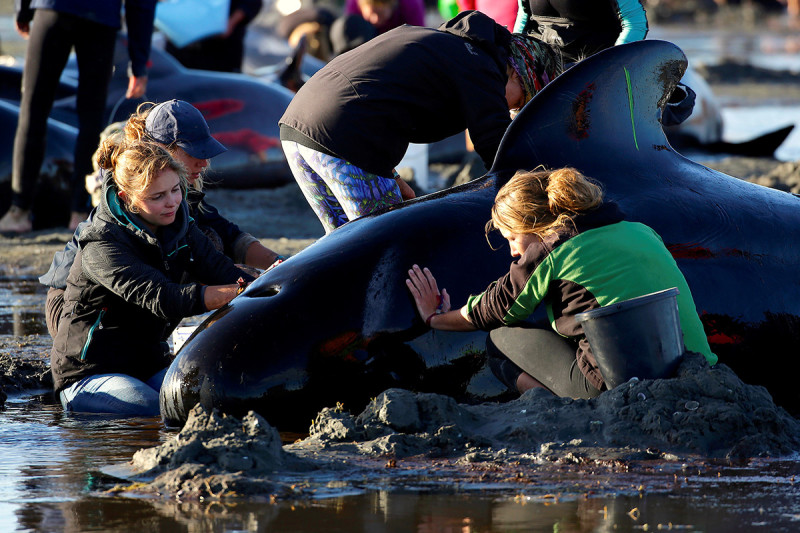
Anthony Phelps/Reuters
By Andy Coghlan
More than 400 pilot whales beached themselves on Thursday in one of the worst whale stranding New Zealand has ever seen. The animals washed up on beaches at Farewell Spit on the South Island, a known black spot for whale strandings. At least 300 died overnight before rescuers began trying to refloat animals. Hundreds of volunteers converged on the site to help this morning.
The reasons for beachings remain a mystery. Explanations range from marine noise pollution to suicides, and NASA is even investigating whether solar storms could mess with whales’ navigation. But geography could certainly be a factor, considering several known stranding blackspots share characteristics.
“Cape Cod in Massachusetts is also notorious, and there’s another in Tasmania,” says Sharon Livermore, at the International Fund for Animal Welfare (IFAW). “They share similar features such as gently sloping beaches, and the coastal configuration as a whole acts as a whale trap.”
At Farewell Spit, where 200 whales beached in 2015, the tide can come in for 5 kilometres, creating a vast stretch of water no more than 3 metres deep at any point, a perilous situation for whales used to deep water. “The water gets shallower, and that’s what gets them disorientated,” says Livermore.
Other factors include whales’ incredibly tight social bonding, which is especially strong within groups of pilot whales. “If one is sick, the rest follow, then geological conditions take over, so it could be a combination of whale disorientation and social bonding that causes these strandings,” she says. “It’s really sad.”
Understanding why
Around 100 whales have been refloated so far, according to Project Jonah, an organisation in New Zealand that mobilises stranding rescue operations.
Livermore says that the success of refloating depends partly on the severity of the whales’ injuries and the depth of the water they are pushed into. If the whales are too injured or are refloated in shallow water, they may not survive or may swim back to the beach.
Livermore adds that IFAW runs a rescue and research team in Cape Cod, and that in a study where team members tagged the whales they refloated, some beached again, but many didn’t come back. “The more we understand why the whales beach, the better we can prepare for and mitigate strandings,” she says.
One more recent theory as to why some mass strandings happen, put forward by NASA, is that solar storms might trigger strandings by interfering with terrestrial magnetic fields that whales depend on for navigation. “It’s still at the early stage of research,” says Livermore.
“We’re looking at all stranding data globally, and lining it up with space data on solar storms,” she says. “We can only find out from large datasets, but if we know that storms are happening and they are connected with strandings, we can make sure we have resources available to respond to any strandings.”
No comments:
Post a Comment